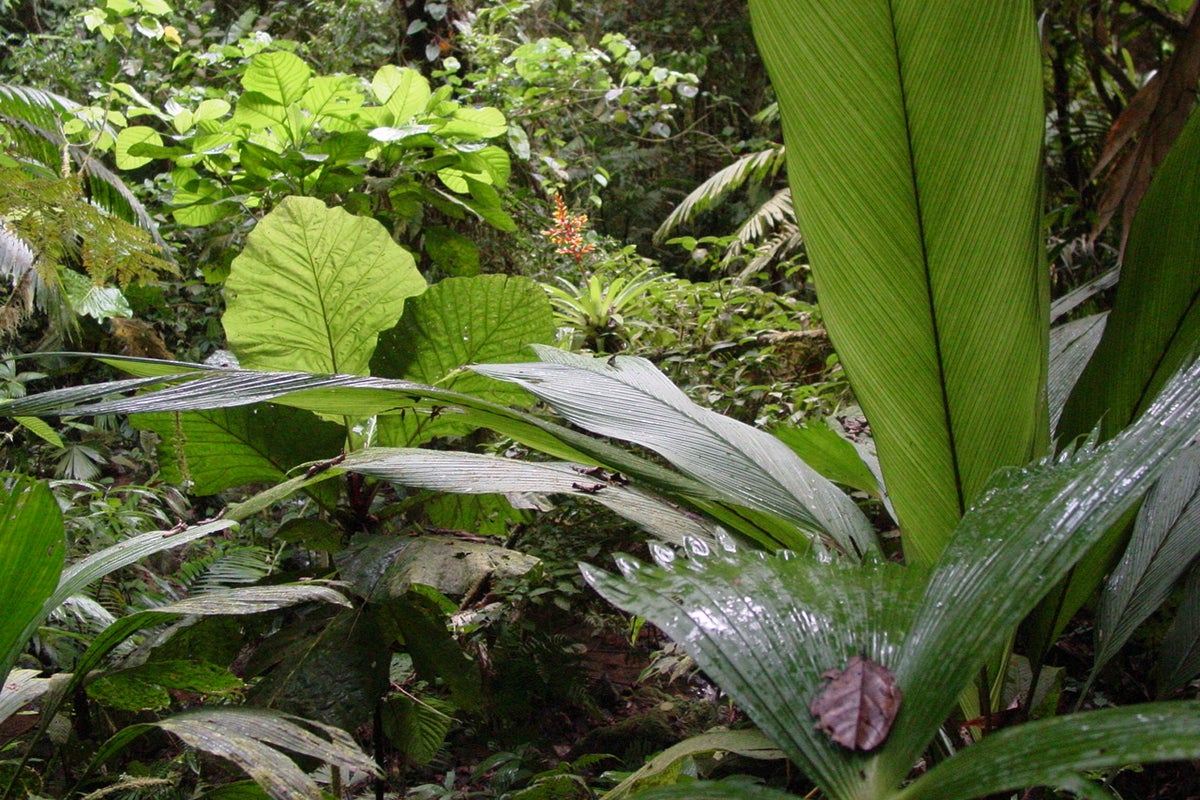Travellers to the tropics have little appreciation of the real risks posed by alien environments, a leading travel medicine specialist has said.
Dr Joshua Allison, medical director at Unique Expeditions, told The Independent’s daily travel podcast: “The thing that people are always worried about is all of the creepy crawlies and the animals and the snakes and the spiders. But genuinely, the best tip I could give anyone for staying sane and comfortable in the jungle is to make sure you don’t get too hot.
“The biggest thing about the jungle is the heat and the humidity. Don’t come down with heat exhaustion or heatstroke. I see it more frequently than people getting bitten by an anaconda or something.”
Despite the heat, Dr Allison maintains it is imperative to be “completely covered” to protect against multiple risks.
He prescribed: “Long trousers, long-sleeve shirt, a peaked hat or baseball cap to make sure that the vines – the rattan that hang down and are sometimes incredibly thin – don’t catch you in the face. The peak keeps that out of your eyes.”
Mosquitoes are a known threat, transmitting malaria, dengue fever and, increasingly, chikungunya.
Dr Allison, who has explored many jungles worldwide, said: “Use mosquito nets, repellents, and malaria prophylaxis if you’re in that kind of area.
“But the heat is more of a problem. I’ve seen very few people with malaria and relatively few people with dengue—and a huge amount of people who we have to stick in a puddle or a river because they’re too hot, with all of their clothes on.
“It’s much more common to put on a backpack that’s too heavy, go walking in the jungle, and end up looking terrible than it is to get bitten by a mosquito.”
He also warned of the importance of keeping feet dry and wearing appropriate footwear to avoid warm water immersion foot – “which is where the bottom of your foot basically falls off,” he said.
“Jungle boots are incredibly important. It’s wet, it’s humid, you’re probably walking through ravines and bogs. If you wear normal shoes, they just end up getting completely full of water.
“People often think about trench foot, which is cold water immersion foot. Warm water immersion foot is similar, but you’re in a hot environment, you’ve got really good blood flow to your feet. It’s more associated with fungal, but also bacterial infection.
“If you go from one day to the next and you’ve still got wet feet, it’s not going to be long – two or three days – before you’re getting carried out in an evacuation rather than walking out.
“So make sure that every evening you do good foot care. Rub your feet with alcohol gel to draw out all that moisture. We have a mycota or antifungal foot powder that everyone rubs on their feet to really dry them out.”
At night, it is essential to sleep in a hammock slung between two trees rather than in a tent, Dr Allison said.
“I can’t even imagine being in a tent. The tent’s on the floor: you’re going to get attacked by all kinds of snakes, scorpions, insects. Surviving the night means being in a hammock – a nice comfy, expedition-grade hammock with a good flat lie – and treat your hammock with permethrin or some other strong insecticide.”
The travel medicine specialist works on expeditions in wildernesses around the globe, including on polar expeditions. But Dr Allison is happiest in the jungle, he said.
“The jungle, they say, is neutral. It’s got everything that you need to survive, but also everything’s trying to kill you at the same time. I quite like that.
“With Arctic or mountain expeditions, you have to take all the things with you to get through that experience.
“Whereas the jungle – if you’ve got one sharp knife or a machete – you can pretty much look after yourself if you know enough things.”
Listen to Dr Joshua Allison in conversation with Simon Calder on The Independent’s daily travel podcast

